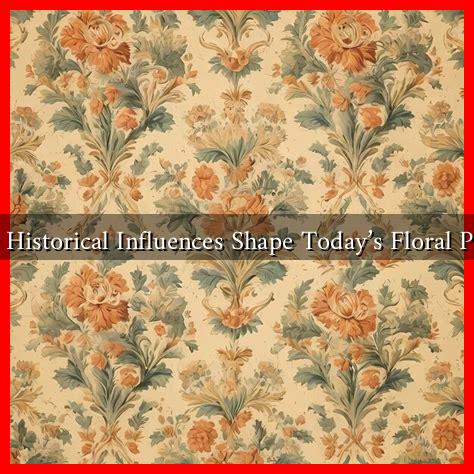-
Table of Contents
What Historical Influences Shape Today’s Floral Prints?
Floral prints have long been a staple in the world of fashion and interior design, transcending time and cultural boundaries. From the intricate patterns of ancient textiles to the bold designs of contemporary fashion, floral prints tell a story of artistic evolution and cultural significance. This article explores the historical influences that have shaped today’s floral prints, examining their origins, cultural contexts, and the modern interpretations that continue to captivate audiences worldwide.
The Origins of Floral Prints
The history of floral prints can be traced back thousands of years, with early examples found in ancient civilizations. The use of floral motifs in textiles can be linked to several key historical periods:
- Ancient Egypt: Floral motifs were prevalent in ancient Egyptian art, often symbolizing fertility and rebirth. The lotus flower, in particular, held significant spiritual meaning.
- Chinese Dynasties: During the Tang and Ming dynasties, intricate floral patterns were woven into silk fabrics, showcasing the artistry and craftsmanship of the time.
- European Renaissance: The Renaissance period saw a revival of interest in nature, leading to the incorporation of floral designs in tapestries and garments, reflecting the era’s appreciation for beauty and detail.
Cultural Significance of Floral Prints
Floral prints are not merely decorative; they carry deep cultural meanings that vary across different societies. Understanding these cultural contexts can provide insight into why floral patterns remain popular today:
- Symbolism: In many cultures, specific flowers symbolize various emotions and concepts. For example, roses often represent love, while chrysanthemums are associated with death in some Asian cultures.
- Seasonal Associations: Floral prints often reflect the seasons, with spring blooms symbolizing renewal and summer flowers representing vibrancy and warmth.
- Regional Styles: Different regions have distinct floral styles. For instance, Japanese kimono fabrics often feature cherry blossoms, while Indian textiles may showcase paisley patterns inspired by floral designs.
The Industrial Revolution and Mass Production
The Industrial Revolution in the 18th and 19th centuries marked a significant turning point for floral prints. The advent of new printing technologies allowed for mass production, making floral patterns more accessible to the general public. Key developments included:
- Block Printing: This technique enabled artisans to create intricate floral designs on fabric, leading to the popularity of printed textiles.
- Screen Printing: Introduced in the 20th century, screen printing allowed for more vibrant colors and complex designs, further enhancing the appeal of floral prints.
- Fashion Industry Influence: Designers like Liberty of London capitalized on floral prints, creating iconic fabrics that remain popular today.
Modern Interpretations of Floral Prints
Today, floral prints have evolved into a diverse array of styles, reflecting contemporary tastes and trends. Modern designers often reinterpret traditional motifs, leading to innovative designs that resonate with today’s consumers:
- Abstract Floral Designs: Many contemporary designers opt for abstract interpretations of floral patterns, using bold colors and geometric shapes to create a modern aesthetic.
- Eco-Friendly Fabrics: With a growing emphasis on sustainability, many brands are now using organic materials and eco-friendly printing methods to produce floral prints.
- Digital Printing Technology: Advances in digital printing have allowed for greater customization and detail in floral designs, enabling designers to experiment with scale and color.
Conclusion
Floral prints are a testament to the enduring relationship between nature and art, shaped by centuries of cultural significance and technological advancements. From their ancient origins to modern interpretations, floral patterns continue to inspire and captivate. As we move forward, the blend of tradition and innovation will likely keep floral prints at the forefront of fashion and design. Understanding the historical influences behind these patterns not only enriches our appreciation for them but also highlights the interconnectedness of culture, art, and nature.
For further exploration of floral prints and their impact on fashion, consider visiting Vogue for the latest trends and insights.

